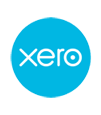HK CORPORATE FINANCE
Value Improvers
The Value Equation
Enterprise value = future cash flow x multiple (inverse of required rate of return)
So how do you increase value? In theory at least it is easy. Increase sustainable cash flow and or increase the multiple – just follow the chart below:
Value Improvement Drivers
Growth
Profitable growth
Profitable growth is an oxymoron in the short term. However profitable growth over the longer term value is the primary value driver. Value tip: The day a business stops growing is the day it starts dying. Your competitors will not be standing still and will be taking market share.
Buyers of businesses want to buy growth and are prepared to pay considerable premiums for demonstrated historic growth and expected profitable growth.
Profit efficiency
Are all of your product lines and customers profitable? Do you even know? Have you ever culled out the under-performing 20% and reduced overheads accordingly. Value tip: 80% of management time is spent looking after the bottom 20% of the business.
All expenses must add value. When did you last really challenge your buying mechanisms? Have you attempted a zero based budget or do you simply allow budget expenses to increase by inflation? Are your fixed costs stretched or do you have idle capacity? Do you have multiple supply sources to ensure your supplier's prices are competitive? Have you ever put your audit out for tender? Value tip: Good buying generates a competitive advantage when setting selling prices.
Asset productivity
The key is to make the most money from the least amount of investment.
Do you really need all that inventory to service your customers? Do you have effective credit control procedures to keep debtor ageing tight?
Are you constantly reinvesting in new technology and training to improve your productivity or is there a lurking liability in the form of a large replacement cost for old and under-serviced plant and equipment?
If a business segment is not earning its cost of capital, now or in the foreseeable future, it should be disposed of. For instance take a company that has two businesses in related industries. The businesses have earned and are expected to earn a 7% and 23% return on capital employed. Their costs of capital, being a blend of the cost of debt and equity, are 9% and 15% respectively. The math is clear. All other things being equal, sell the under-performer (-2% value destruction) and reinvest the proceeds in the over-achieving division (+8% value creation). Value tip: Businesses should use as little capital as possible to generate as much profit as possible. In that way your return on investment is maximised and your scarce capital is working hard for you.
Risk reduction
Risk is, in part, a function of exposure to dependencies – owner dominated management, a major customer or supplier, lack of skilled labour and so on. Remove these dependencies and the risk profile is lowered thereby increasing the multiple and increasing value.
Volatility of cash flow also increases risk. Remove seasonality and smooth out the cash flow, lower the risk, increase the multiple, increase value
Return on Investment and goodwill
Everyone wants a superior return on their investment. Surely you would rather get 6% on your cash deposits and not 3.5% so long as the risk profile is the same. The better return on investment you can get out of your business the higher the value and the higher the goodwill component. Value tip: The math is easy. Increase the expected return; lower the investment, the return on equity increases exponentially and you get to go fishing sooner rather than later!! Now that can't be all bad.
GET IN CONTACT
- Auckland Office
Level 2, Boehringer Ingelheim Building
2 Osterley Way
Manukau City
Auckland, New Zealand
 CA
CA
 MYOB BankLink
MYOB BankLink
 Xero
Xero

